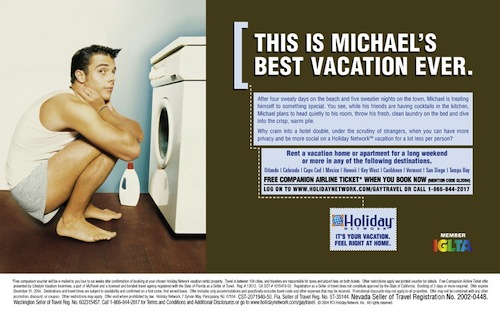POLITICS AND POP CULTURE have always played off each other in advertising, and nowhere has that link been more clear than in gay-targeted ads. Over the past four decades, while gay men and lesbians emerged from invisible to marginal to actively courted as a consumer market, advertising has come along for the ride, mirroring social changes, often in surprising ways. Where ads once winked and teased about homosexuality, gayness has risen from subtext to text in marketing.
If the 1970’s were about hedonism, the 80’s about activism, and the 90’s about visibility, the early 2000 years are all about equal participation. The implications of that social shift are immense for marketers seeking gay “mindshare.” I would argue that because of the social and political developments of the last few years, we’re about to see the most profound shifts in gay-themed advertising since the first gay-focused ads appeared in the early 80’s. Just as the debate over same-sex marriage rights portends a new kind of social integration for gay people, advertising culture will undertake its own kind of assimilation of gays—just as it has done for African-American, Asian, and Hispanic consumers through recent decades.

For consumers, this will mean more complete, less divisive portrayals of GLBT people in advertising. Until now, ads targeted to gay consumers have focused on what makes them different. Moving forward, I believe the angle will change, just as it has for other emerging markets, as advertisers begin to focus on people less for their gayness than for their fame, talent, or looks. For marketers, this will mean higher expectations on the part of gay consumers, but more chances to reach them. What will those expectations and opportunities be? Based on what we’ve seen at Prime Access and what we’ve been observing from our Fortune 500 clients, here are some of the trends that we see on the horizon in the coming five or ten years.






